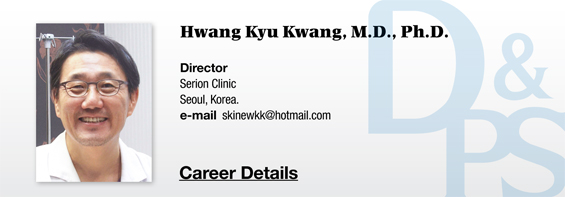▶ Previous Artlcle : #1-2. Anti-aging procedures
1. Minimally invasive anti-aging procedures
Autologous fat grafting
Autologous fat grafting was innovated by Dr. Donofrio, a professor of dermatology at Yale School of Medicine. Dr. Donofrio proposed a theory where the anatomical changes in the aging skin are modified to resemble the anatomical structure of a younger skin. In this technique. Autologous fat is injected into the depressed and wrinkled areas around the eyes, forehead, cheeks, etc. to bring back the tighter skin with restored volume. This technique is a more fundamental approach of anti-aging procedure.
[Advertisement] Selene(Diode hair removal Laser) – Manufacturer: (www.senbitec.com)]
This procedure kills two birds with one stone. As fat is harvested from areas of excessive fat deposition such as the lower abdomen, lateral thigh, and hips, it also achieves local removal of unnecessary fat. The primary purpose is the restoration of 5-10 years young looking appearance in areas of volume loss, skin atrophy and aging in the forehead, cheek, deep wrinkles and hand, etc. Autologous fat grafting is also effective in scleroderma or skin atrophy due to sequelae of graft, breast enhancement and correction of deep nasolabial folds, etc.
Once harvested, the fat can be cryopreserved for several subsequent injections with an interval of 2-3 months. Fat can be reabsorbed into the body, however, more refined techniques such as FAMI technique (where fat droplets are injected in muscle for better survival), harvest and transplantation of stem cell adipocytes, and combination with PRP, etc. can improve the survival of transplanted fat for potentially permanent correction. The filler injection I have discussed in the previous article may also be used as a simpler substitute of autologous fat transplantation.
Thread lift
In a thread lift procedure, a thread with cogs is used to pull up the sagging skin tissues. This procedure has many fetching names including ‘magic lift’, ‘happy lift’ or ‘miracle lift.’ Surgical threads should be safe enough to be used in the heart surgery. By pulling the normal soft tissues together, this lift can reposition the soft tissues and provide a volumed facial contour for youthful appearance without using synthetic materials. Especially, the nasojugal grooves are pulled upward to smooth the cheeks. The neck wrinkles, nasolabial folds, and sagging eyebrows can also be effectively corrected. As a minor plastic surgery procedure, thread can be used to refine the shape of the nose tip. Major drawbacks of this procedure are that the thread can be undone over time and that the thread permanently remains in the skin. Side effects may include granuloma formation, bruising, edema, pain, and muscle or skin stiffness.
Lately, cogged or screwing PDO (polydioxanone), an absorbable suture material, is available but the lifting effect may be short-lived. Indications of thread lift are jaw-line tightening, sagging cheeks, and neck lines, etc. It is also used in square jaw reduction and contouring of the calf muscle, sagging breast and buttocks.
ePTFE lift
A thin Gore-Tex strip is inserted through a 1.5cm post-auricular incision into the cheek. At least a month after the initial insertion when adhesion of Gore-Tex strip and skin occur, an incision at the same site is made to elevate the tissues to the desired location and fix them firmly onto the post-auricular fascia. The advantage of this procedure is that it can be repeated years later when the skin is loosened again and can be performed to correct the sagging jowls. Caution should be taken to avoid nerve damage during dissection for insertion.
-To be continued-
▶ Next Artlcle : #2-2. Minimally Invasive Anti-aging Procedures





















